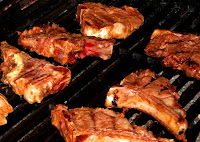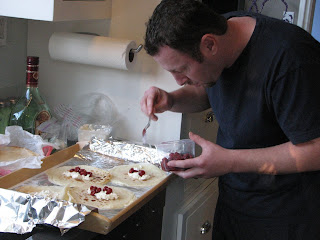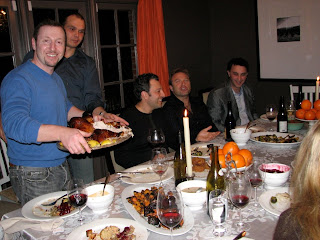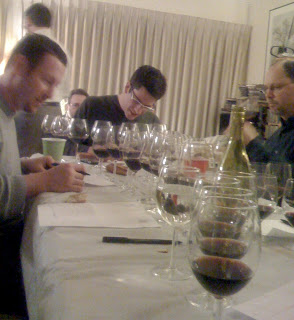Perfect wine for a mushroom beef stroganoff

Mission : find a wine pairing for a creamy mushroom beef stroganoff. I cook a particular type of beef stroganoff - "triple mushroom medley" - as I call it. It's a combination of shitake, button and oyster mushrooms, browned and then sauteed in sour cream broth with shallots and thin strips of short rib meat until the meat is tender, and all the flavors fuse into a deliciously creamy mushroom beef stroganoff. I enhance the flavor of mushrooms with a pinch of nutmeg, savory, and parsley. Served on top of linguine pasta. The perfect side for this kind of Russian dish is pickled tomatoes and cucumbers, to balance out the creaminess of the main dish. Analysis : I needed a wine that was earthy (to match the mushrooms) with some age (for slightly oxidized, pickled effect), soft, with medium body so as to not overwhelm the mild and creamy texture of the ingredients. It took a little bit of thinking... I happened to have a prized bottle of 1996 Lavaux St. Jacques (1st Cru) fr









